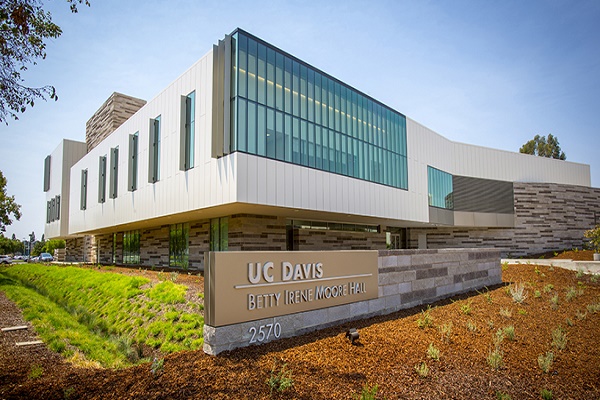University of California, Davis: VC Tull Joins White House Discussion on STEM Equity
Renetta Garrison Tull, vice chancellor of Diversity, Equity and Inclusion, recently participated in a White House roundtable, the third in a five-part series, “The Time is Now: Advancing Equity in Science and Technology.”
RELATED CONTENT
Grants Continue UC Davis’ Emphasis on Faculty Diversity
Sloan Grant Enhances STEM Faculty Diversity Efforts Amid Pandemic
The Office of Science and Technology Policy is hosting the series, described by officials as being “designed to foster candid and robust conversation with researchers, thought leaders and advocates on themes related to STEM equity, and to gather valuable feedback that can assist the office in assuring that the national STEM ecosystem is preeminent, equitable and inclusive.”
Tull joined the session on “Emerging Models and Pathways for Success I: Institutional and Academic Contexts,” held online Sept. 9. “I was excited to be invited to contribute,” Tull said. “While we are continuing to work on advancing equity, we can be proud of the way that we are progressing.”
Under the rules of the meeting, participants are not allowed to elaborate on the discussion beyond the readout provided by the White House.
Successful approaches
“The session … focused on learning from successful approaches to increasing equitable participation in science, technology, engineering and mathematics (STEM) fields through institutional programming, partnerships and direct engagement with underrepresented communities at a variety of career stages, geographic locations and functional abilities,” the readout states.
“The goal of this roundtable was to explore the evidence-based techniques that participants used to evaluate the success and efficacy of their programs and discuss insights they gained in carrying out this work.”
Eric Lander, director of the Office of Science and Technology policy, and Alondra Nelson, deputy director for Science and Society, “engaged with the participants about their experiences building successful programs that advance STEM equity and removing barriers to participation, discussed lessons learned that have helped improve their programs over time, as well as the data, metrics and evaluation practices that they use to measure success towards advancing equity,” the readout states.
“Participants discussed the necessity of quantitative data in assessing the effectiveness of their programming, while emphasizing that a complete assessment of the barriers facing marginalized communities also requires qualitative data, including consideration of cultural contexts, and the impact of social climate on a diverse population of STEM learners.”
Support systems
According to the readout, the participants noted steps that organizations can take to increase diversity and inclusion in STEM fields, including:
Creating educational experiences that are captivating to a wide variety of learners.
Providing multiple entry points to instruction with no assumption of previous experiences.
Substantively including families and other members of students’ support systems in STEM activities and events to increase participation of learners and their loved ones.
“The adaptation and dissemination of promising practices such as these will bring us closer to a STEM ecosystem that reflects the full diversity of the American people, thus spurring innovation, and increasing economic benefit for historically underrepresented groups and the entire nation,” the readout states.
Previous roundtables
Readouts from the first two roundtables are also available online:
July 29 — On the topic of creating opportunities for people with disabilities to participate in STEM.
Aug. 20 — On the topic of diversity, equity and inclusion, and anti-racism in STEM.

